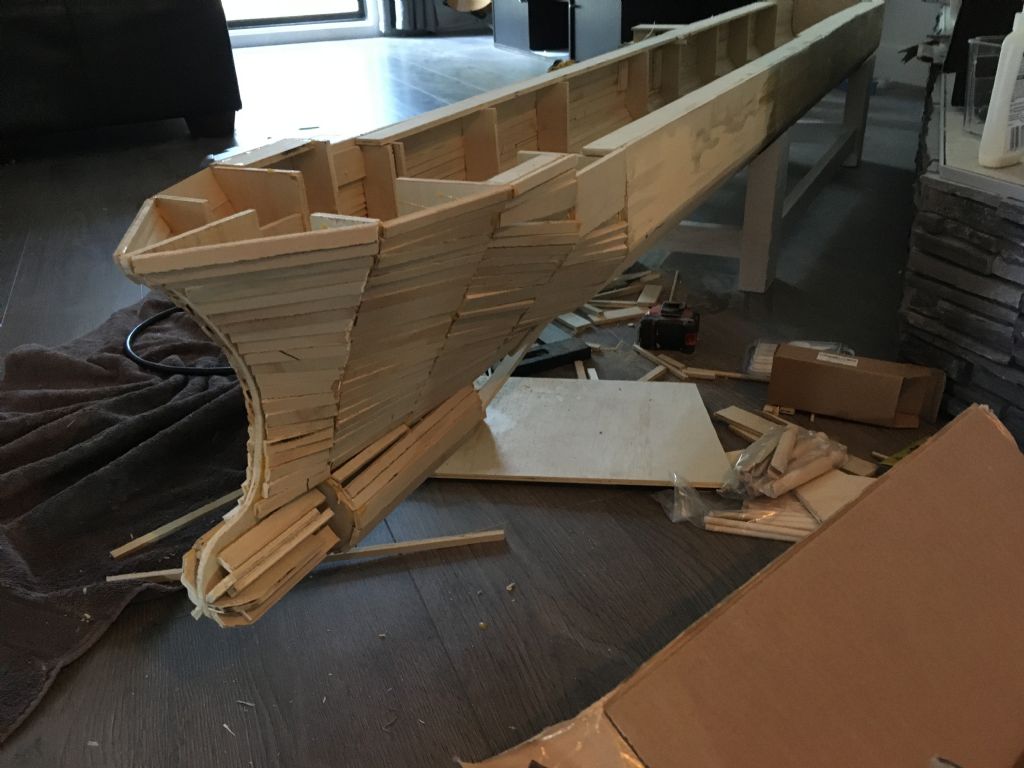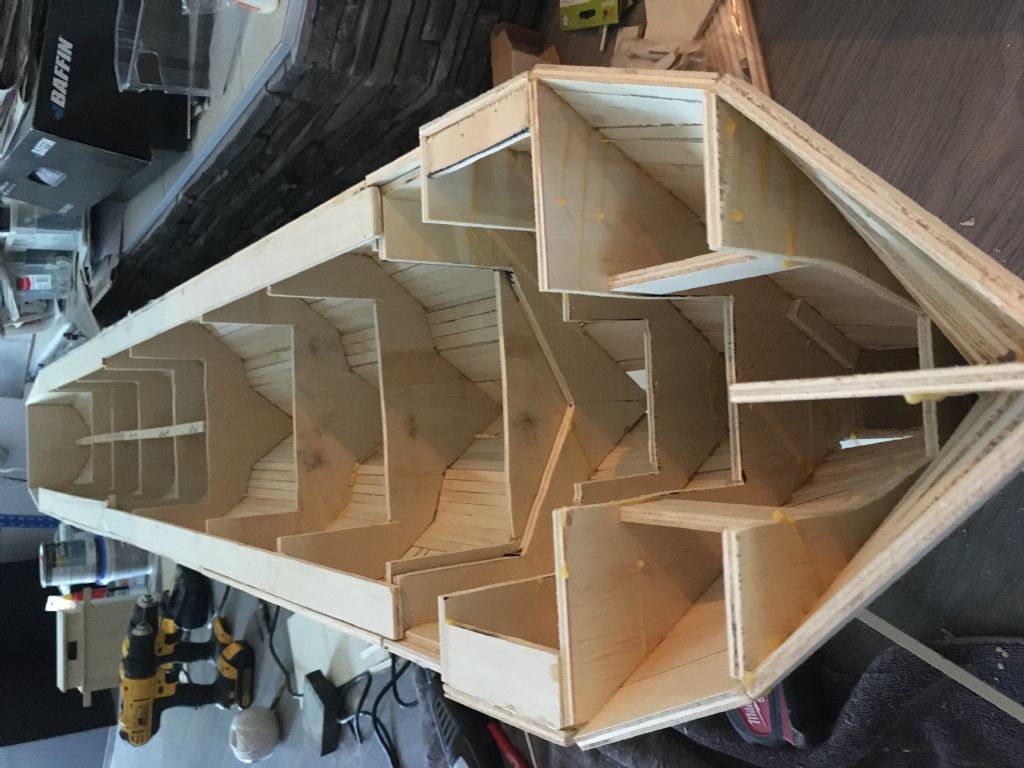Finding the right motor for a hull.
Back in the elder days there was a limited range of motors in the model trade. They were marked in the adverising of the time as suitable for boats of this length or that length, depending on the motor. Perhaps surprisingly, it worked well. Now we have lots of choice, which means, generally, a lot more ways to mess up.
A given displacement hull length has a top speed through water governed by a set formula (look up "hull speed" . A freighter is unlikely to ever get anywhere near that, whatever the scale. Scale speed, according to people who use test tanks, is relative to the square root of the scale. One result of this is that rotation speed of a scale pro has to be multiplied by the square root of the scale. A full size prop turning at say 1000 rpm, on a 100 scale model will need to turn at 10000 rpm. (numbers picked for easy mentarithmetic)
. A freighter is unlikely to ever get anywhere near that, whatever the scale. Scale speed, according to people who use test tanks, is relative to the square root of the scale. One result of this is that rotation speed of a scale pro has to be multiplied by the square root of the scale. A full size prop turning at say 1000 rpm, on a 100 scale model will need to turn at 10000 rpm. (numbers picked for easy mentarithmetic)
Moving a hull through water requires that the hulls volume be shifted in the time it takes for the hull to pass a point. It also requires that the propeller move that water the length of the hull in that time (Newton mentions that sort of thing). In practical terms, more water needs to be shifted further, because there are losses. Moving enough of this water requires enough energy, This comes down to current, but the current is dependant on the way that the prop converts power from the motor into moving water. A big prop turning relatively slowly will move a large volume, but not far in a set time. A small prop rotating fast will shift much less volume, but will move it a long way. Big slow prop, pulling power, not much speed. Small fast prop, speed but little pulling power.
Stuff happens on a scale model a lot faster than full size real life. Time can be considered to scale the same as speed – it is divided by te square root of the scale. Slowing control servos makes no sense. Slowing servos working other functions does. Extra boxes like the ServoMorph that connect between the radio and servo do jobs like that.


 . A freighter is unlikely to ever get anywhere near that, whatever the scale. Scale speed, according to people who use test tanks, is relative to the square root of the scale. One result of this is that rotation speed of a scale pro has to be multiplied by the square root of the scale. A full size prop turning at say 1000 rpm, on a 100 scale model will need to turn at 10000 rpm. (numbers picked for easy mentarithmetic)
. A freighter is unlikely to ever get anywhere near that, whatever the scale. Scale speed, according to people who use test tanks, is relative to the square root of the scale. One result of this is that rotation speed of a scale pro has to be multiplied by the square root of the scale. A full size prop turning at say 1000 rpm, on a 100 scale model will need to turn at 10000 rpm. (numbers picked for easy mentarithmetic)




